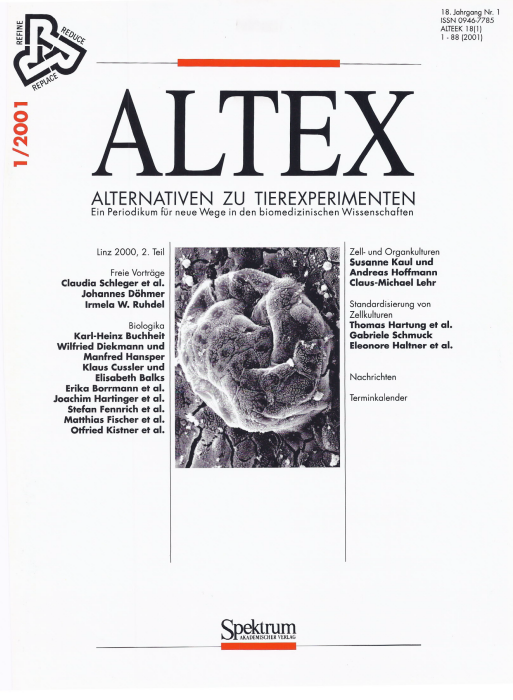[A new application for the human whole blood test: development of an assay to assess the health risk of air-borne microbial contaminations] [Article in German] LINZ 2000
Main Article Content
Abstract
The pathogenic properties of environmental microorganisms as well as pyrogens as fragments of those bacteria (especially endotoxins) for humans is increasingly recognised. Various clinical syndromes are described after contact with airborne microbial contaminants via the respiratory tract: Sick-building-syndrome, humidifier lung (a form of hypersensitive pneumonitis), "Monday sickness" etc. Air-conditioning and ventilation systems intensify this problem as well as storage of compost within the household which represents a considerable source of airborne pollutants. In 1995 a new method for the detection of pyrogenic (fever-inducing) hazardous substances was described by Hartung and Wendel. This whole blood assay utilises the natural reaction of the immune system in order to detect a broad spectrum of pyrogens very sensitively in the relevant species. Injectable drugs are the main area of application in which this innovative test has already proven effective and is currently validated for inclusion into European Pharmacopoeia. In co-operation with the FU Berlin we could demonstrate in ventilation systems in animal stables that the whole blood pyrogen test can also detect airborne environmental microorganisms very sensitively. The filtration technique for collection of these germs is an established method for air-conditioning and ventilation systems. In co-operation with the FU Berlin (Institut für Tier- und Umwelthygiene) and the filter producer Sartorius this method is currently developed for the detection of airborne contaminations.
Article Details

This work is licensed under a Creative Commons Attribution 4.0 International License.
Articles are distributed under the terms of the Creative Commons Attribution 4.0 International license (http://creativecommons.org/licenses/by/4.0/), which permits unrestricted use, distribution and reproduction in any medium, provided the original work is appropriately cited (CC-BY). Copyright on any article in ALTEX is retained by the author(s).


